Microbial Visions
Microbial Visions featuring core artist Kay Hartung and guest artists Maria Penil Cobo and Mehmet Berkmen will run from January 30th through February 24th. A first Friday artist reception will be held on February 1st from 6–8 p.m. and a “Bacterial Art Talk” on Saturday, February 9th from 2–4 p.m. Below the artists talk about their work.
Kay Hartung
Why Pattern?
In my most recent work you will see that pattern has become an important element. What is it about pattern that I find so compelling? I can remember my drawings as a child to be heavily patterned. As a fiber major in college and grad school my focus on textiles developed. I am attracted to patterns in nature, in fabrics, in architecture. I recently traveled to Portugal where I was captured by the beauty of the richly patterned tile work found everywhere. I do find looking at pattern though sometimes almost optically confusing has a calming effect on me. It feeds something in my soul. It quenches my thirst for visually delectable imagery. It challenges my brain as I analyze it’s construction. It produces order within chaos for me.

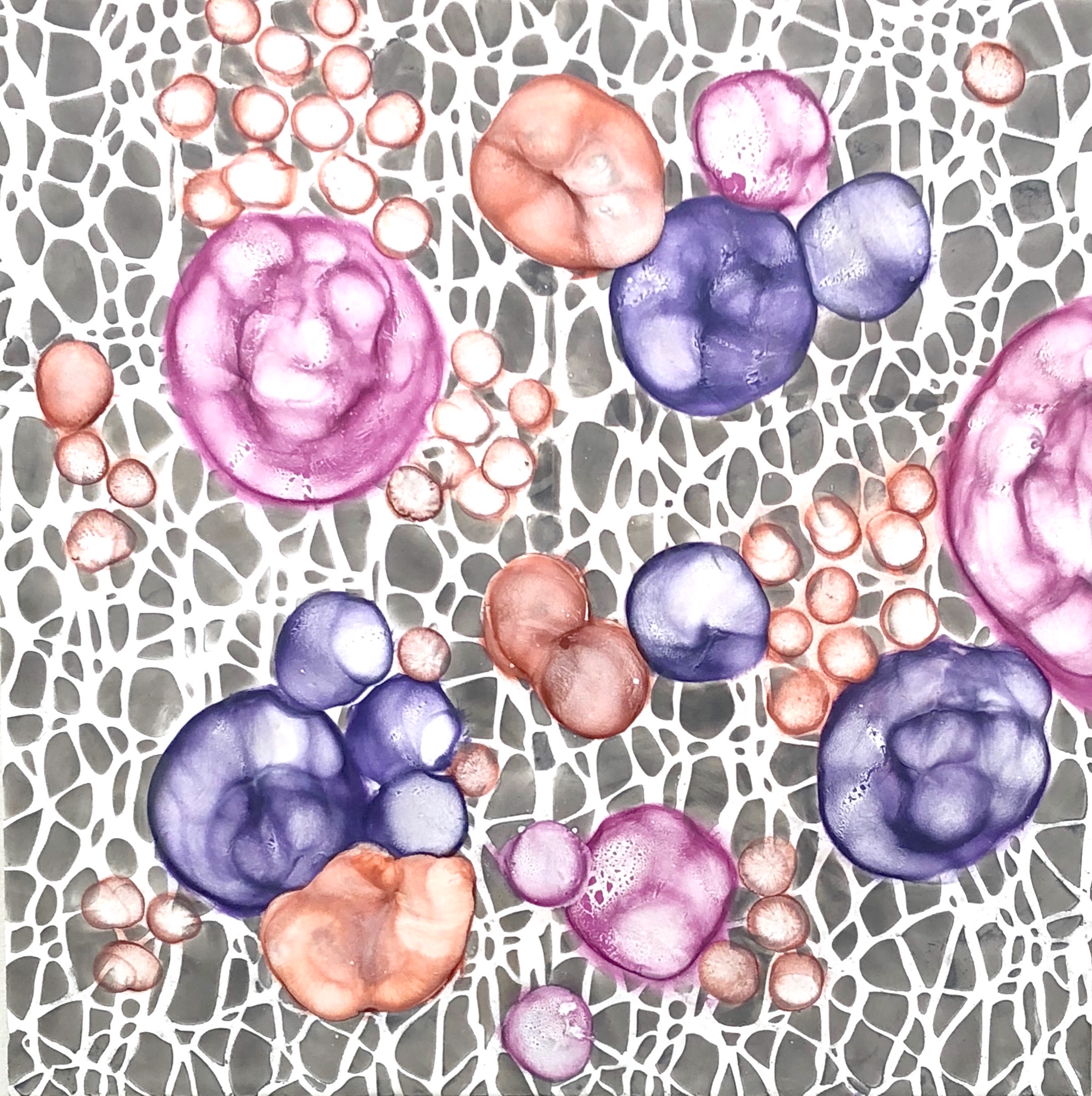

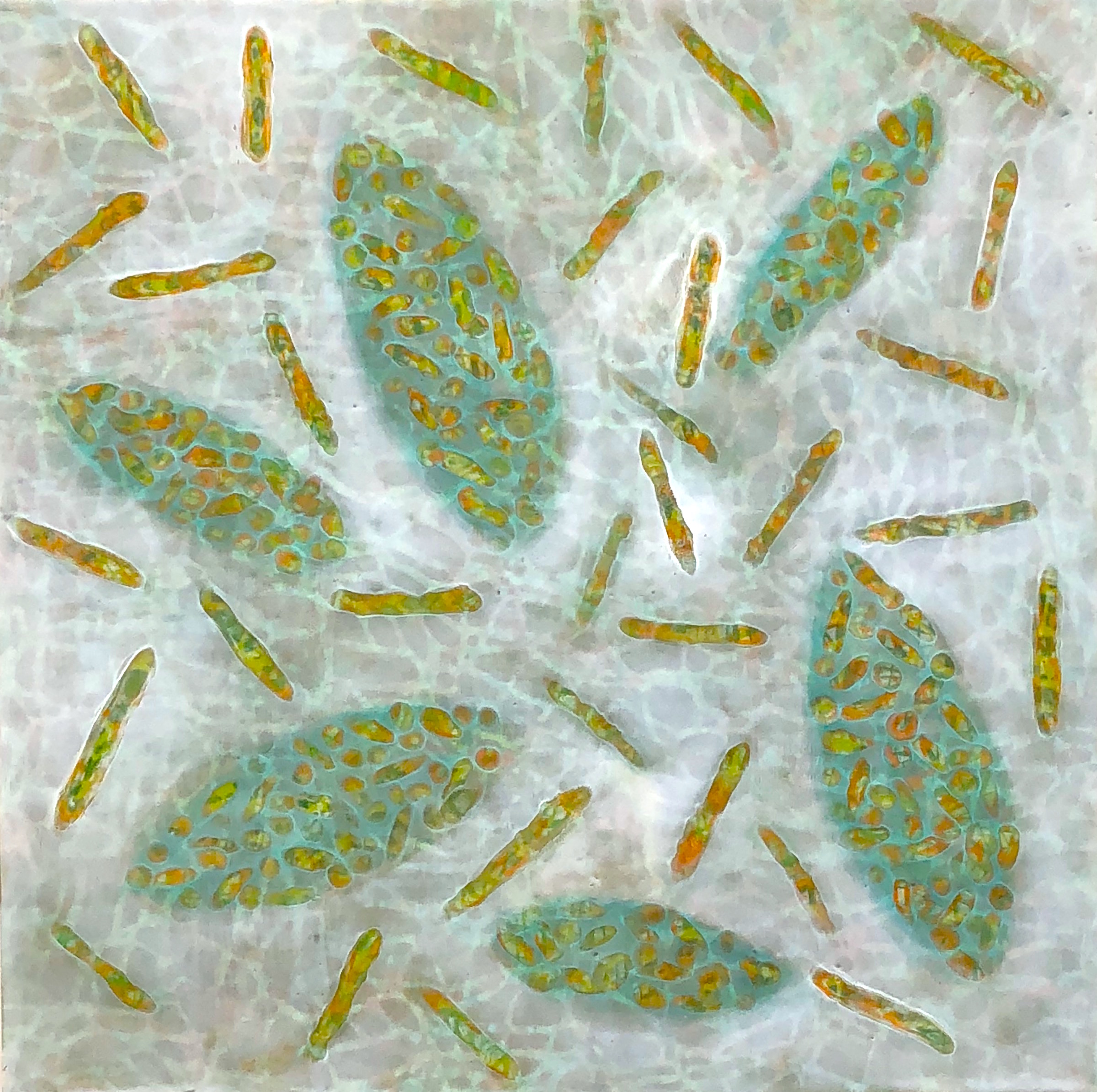
“Humans (and to varying extents other living creatures) have an inborn and intense predisposition to perceive, represent and create pattern to make sense of a perilous and confusing world around us.” –This quote from a recent article in Interalia Magazine by Simeon Nelson spoke to me in a way that perhaps explains my attraction.
I approach my paintings with a textile sensibility, creating landscapes for the biomorphic forms to exist. By placing one pattern upon the next through the layering of color upon color, complex interactions between color and form are produced. I see these patterns as the intricate and crowded atmospheres in which biological forms interact and develop. The network like quality of some of the backgrounds relates to the communications that must occur between the mind and the body to produce action and thought.
Maria Penil Cobo and Mehmet Berkman
Bridging the gap between Humans and Microbes:
Microbes were the first living things to inhabit this planet and have shaped every aspect of our ecosystems for the past 4 billion years. They represent one of the largest biomass, the most biodiversity, and are essential for recycling key elements and for human health. They are everywhere and all over our bodies, yet are invisible to our eyes. We do not see them nor notice them. Usually, we interact with them only in the context of disease and rot. This imbalanced and misinformed relationship that humans have with their own microbial community causes fear and disgust.
Our core mission is to change the relationship humans have with microbes. Using the universal language of art, we would like to bring the invisible to the visible. To familiarize the public with the beauty of bacteria. To engage the public into a deeper understanding and increase their awareness and interactions with the microbial communities in and around us.
Ultimately to enlighten and disseminate knowledge.
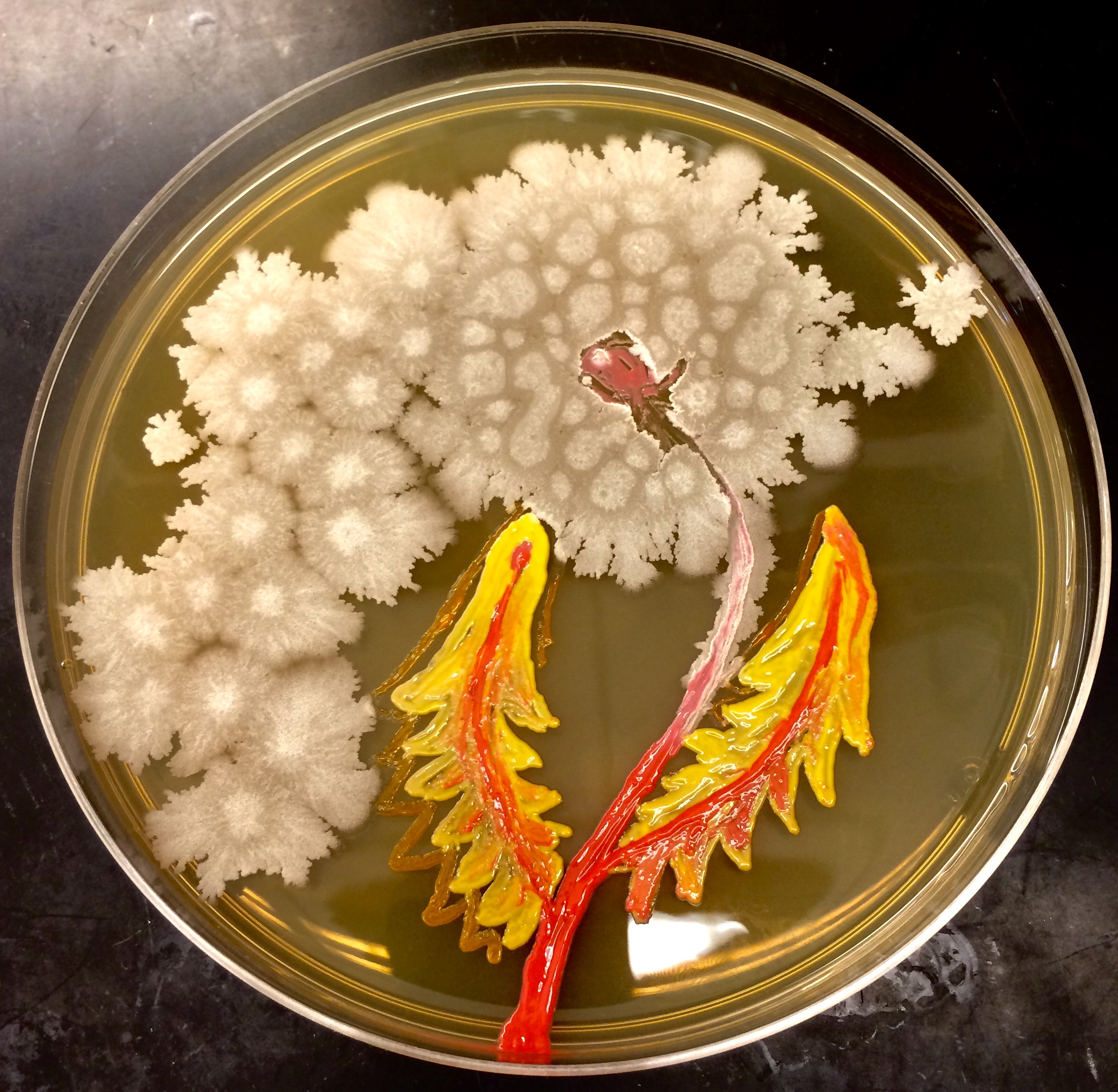
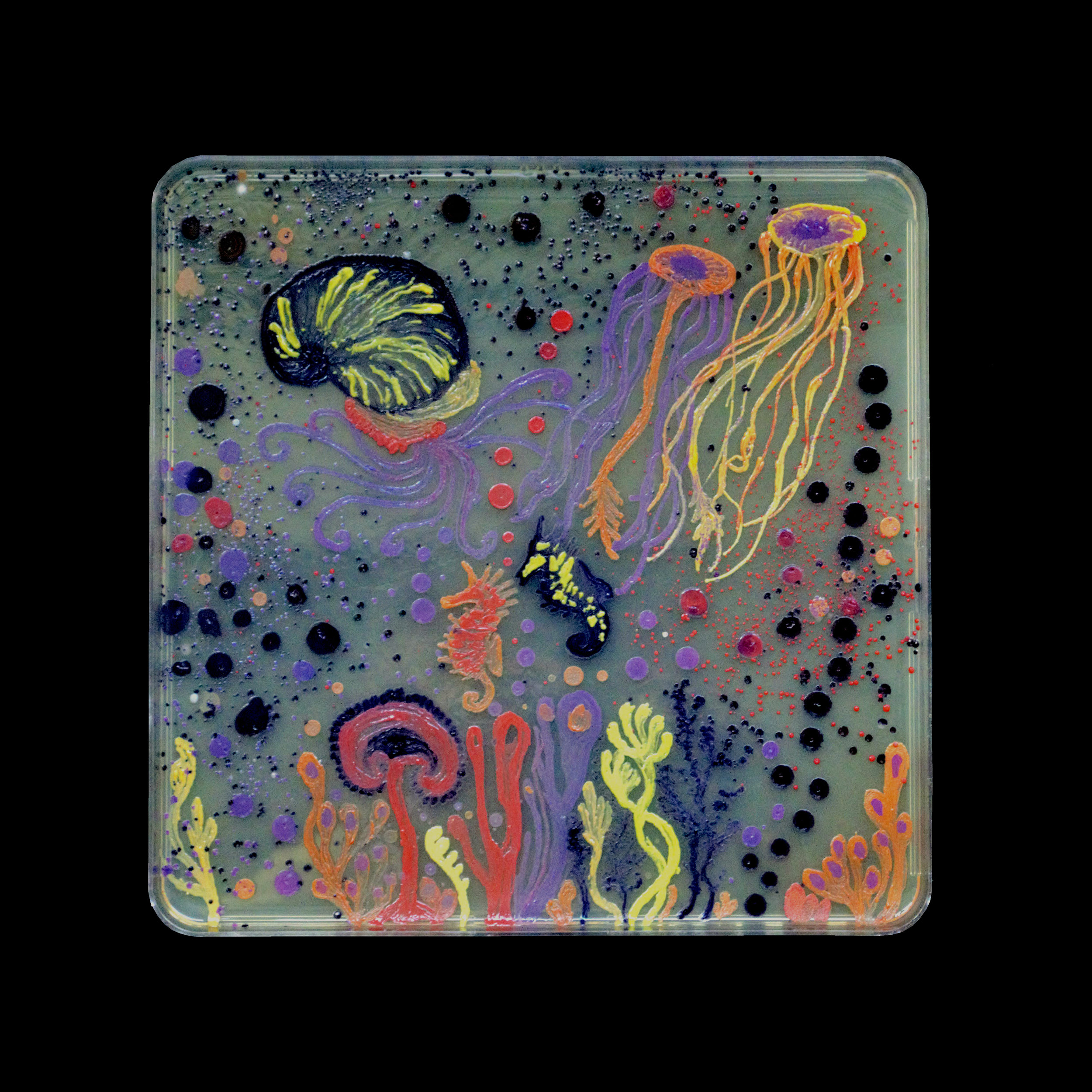
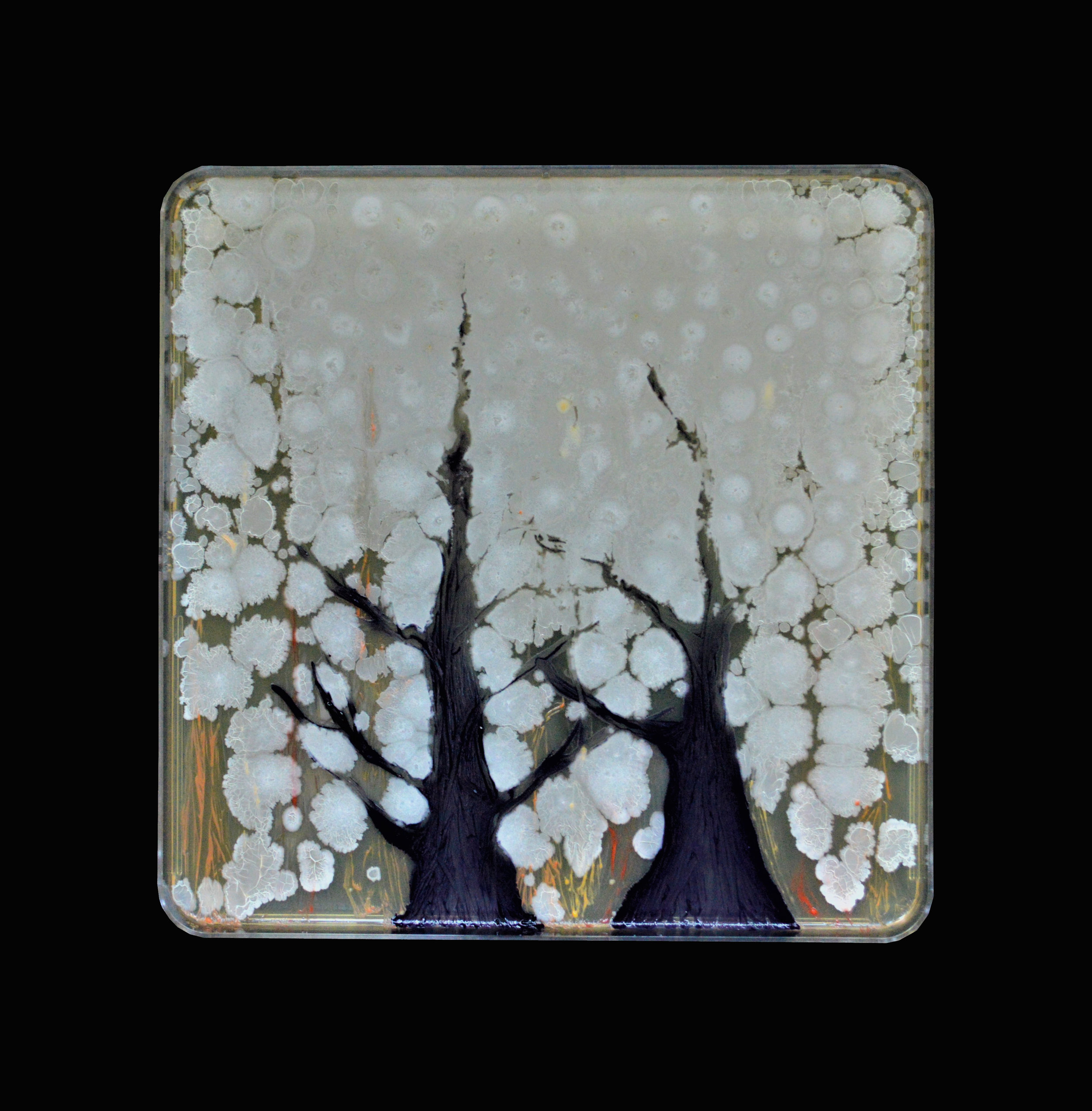
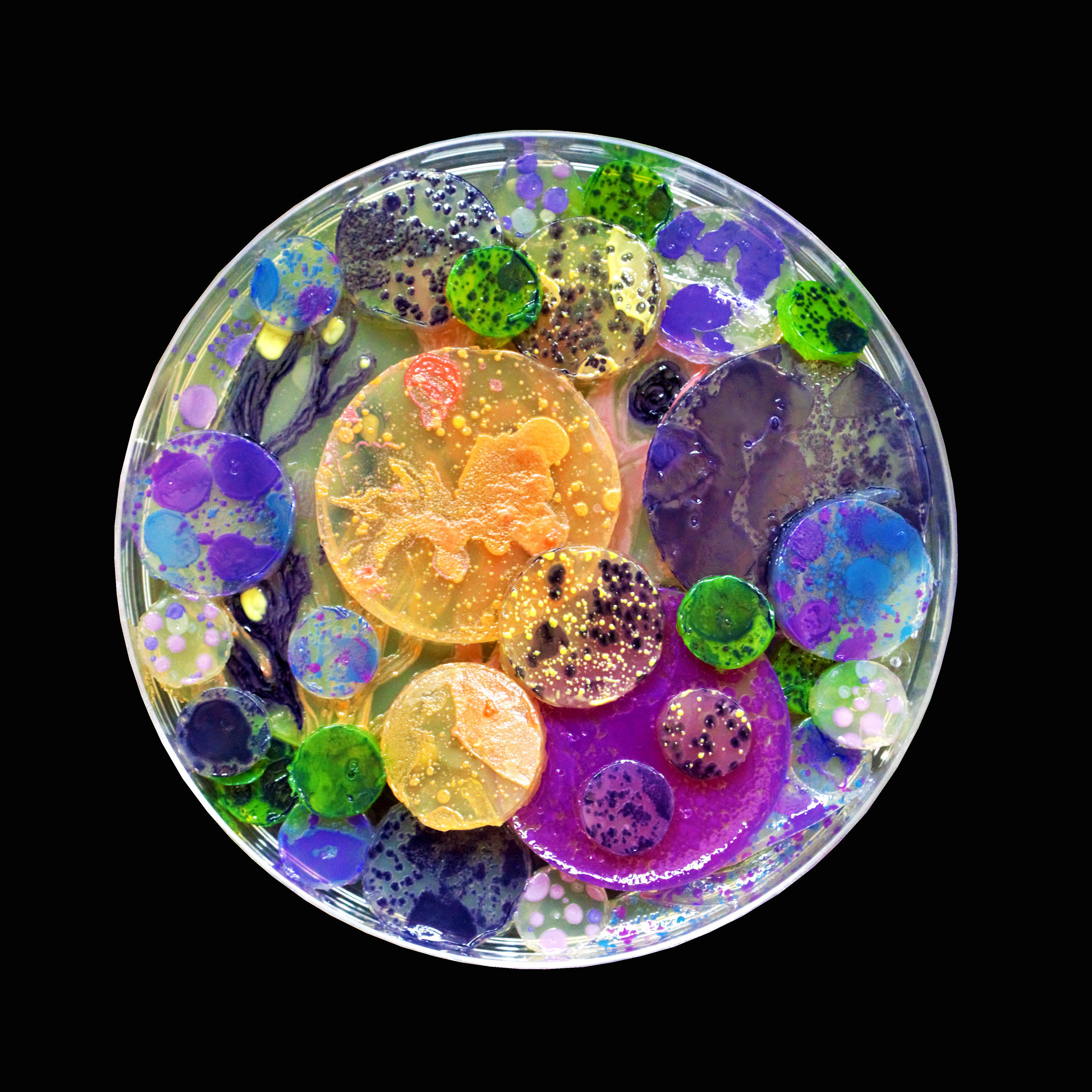
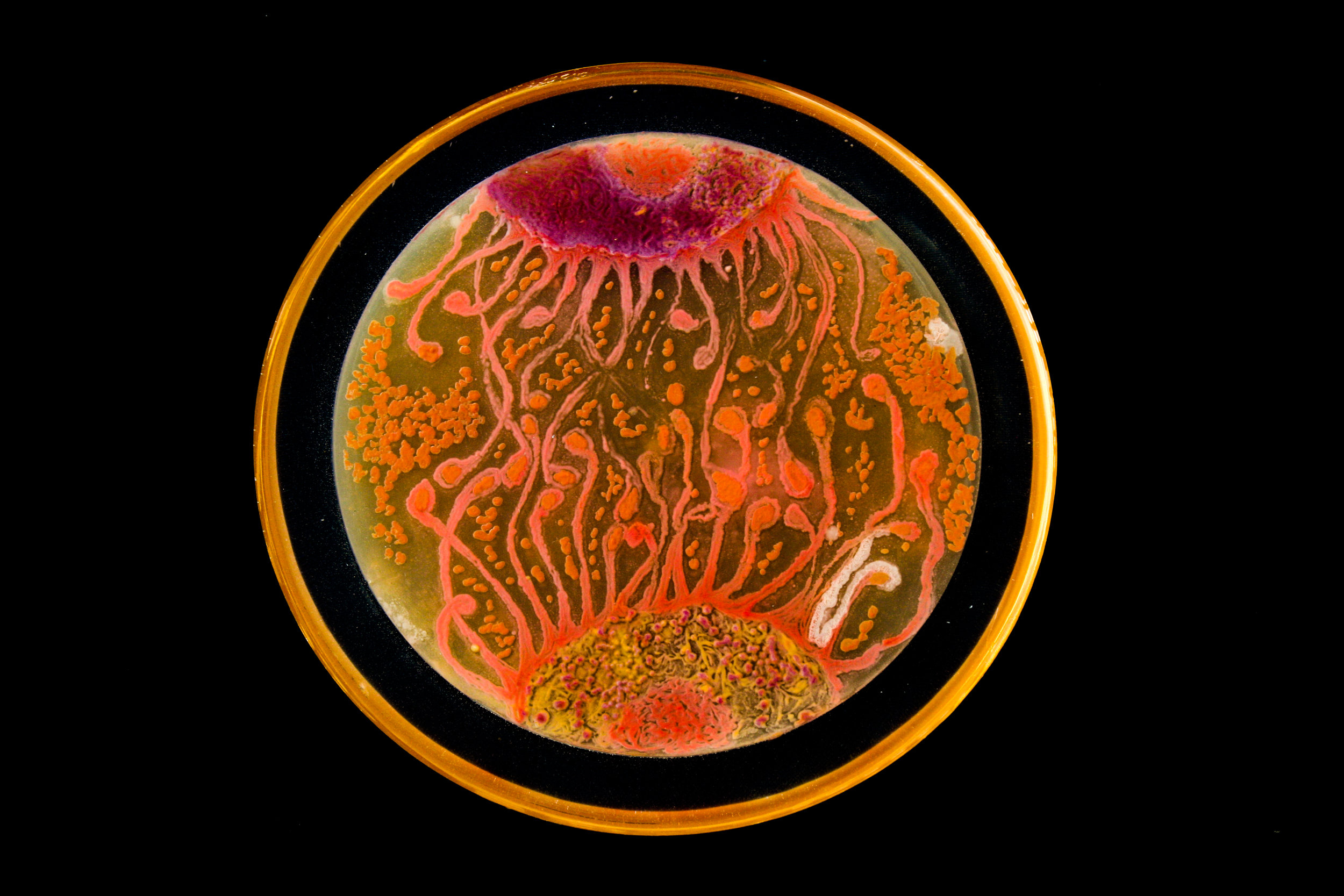
Bridging the gap between the Arts and Sciences:
The description of Reality has been artificially split into methods of arts and sciences. This separation is reflected in our academic institutions and taught at a young age to growing minds. The philosophical separation between arts and sciences is rooted in history and culture, not in reality. We believe that the artistic and scientific methodologies of describing reality are equally valid. A holistic approach to describing reality using the methods of arts and science is essential to have a more complete understanding of our world.
Collaborative efforts between artists and scientists is therefore essential in bridging this artificial chasm.
How we bridge the gap:
Using agar, a gelatinous-like substance to fill the petri dish, we create a canvas where the microbes can be spread around like paint and allowed to grow and create art. Unlike most forms of art, our ‘paint’ is alive, and will live, breathe and grow over time, often in unforeseeable ways. It is not constant and the artist does not have full control of its medium. In order to preserve the final artwork, we seal the agar petri dishes with epoxy, thus enabling the viewers to touch and handle the work in safety. We also capture the bacteria growing in time-lapse movies, using a special chamber we built. Currently we are working to expand our art to 3D agar structures and bacterial art jewelry.
